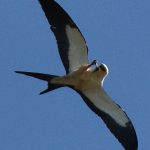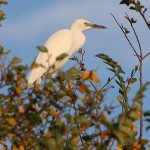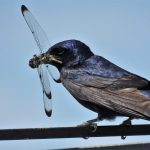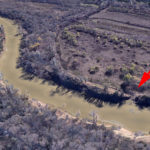The natural history of Roseate Spoonbills in Dallas/Fort Worth is difficult to pin down. These big, pink wading birds with their distinctively spoon-shaped bills are well known in Texas, but they are rarely seen in in the DFW metroplex.
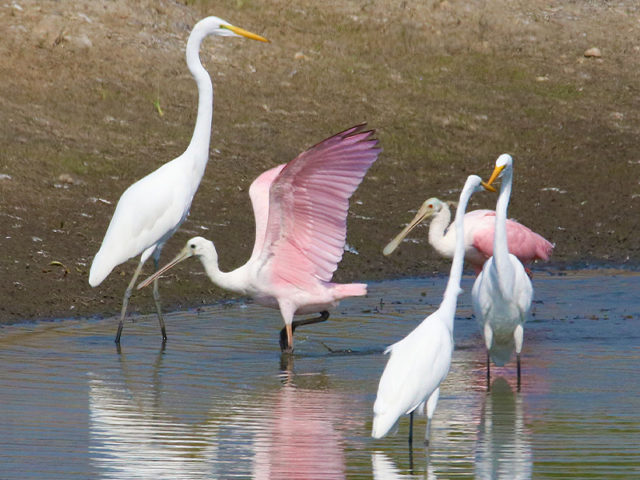
Most spoonbills in Texas can be found along the gulf coast. There, they spend their summers breeding in communal nesting grounds and feeding in the brackish wetlands near the coast. The majority of Texas spoonbills migrate to Central or South American as winter approaches.

Roseate Spoonbill observations–and actual numbers–drop off sharply as you move north toward DFW, but that doesn’t mean they are not here. Every summer a couple of dozen Roseate Spoonbills, resplendent in their vivid breeding plumage, arrive in North Texas. They can be observed on most summer mornings flying up from the southeast, following the Trinity River and heading for their favorite feeding grounds in the Great Trinity Forest.
Where they are coming from is the big question. Roseate Spoonbills in breeding plumage might suggest that these birds are nesting somewhere near the metroplex. There may be a rookery tucked somewhere in the dark recesses of the Trinity bottomlands, but if so, its location remains a mystery.
The closest known spoonbill breeding ground is in the Richland Creek Wildlife Management Area, some 90 miles south of Dallas. Located just off I-45 near the town of Fairfield, this rookery is over 200 miles from the coast. It is thought to be the northern most breeding location for spoonbills in Texas. But, at 90 miles away, Richland Creek is still very far from the metroplex. I can’t help but to think that there must be a breeding colony somewhere a little closer to Dallas/Fort Worth.
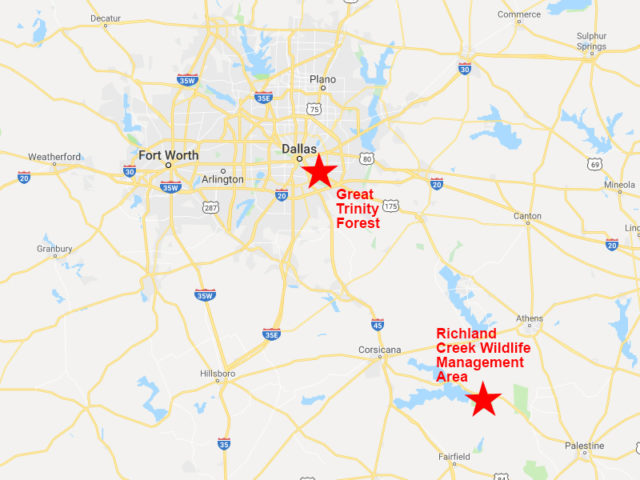
DFW spoonbills seem to pass down a preference for the Great Trinity Forest from generation to generation. They return to the same general area year after year and decade after decade. These remote parts of the Trinity River bottoms have been the spoonbill’s summertime home in Dallas for as long as anyone can remember.
Roseate Spoonbills stay in North Texas through the early part of fall. It is not unusual for one or two spoonbills to be observed in unexpected places around the metroplex through the summer and into the middle of October. There seems to be a surprise sighting or two every year. More atypical, is a larger congregation, like this one found in Denton County earlier in the week.
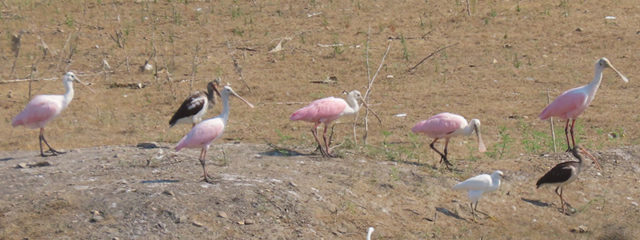
observed at this Denton County location
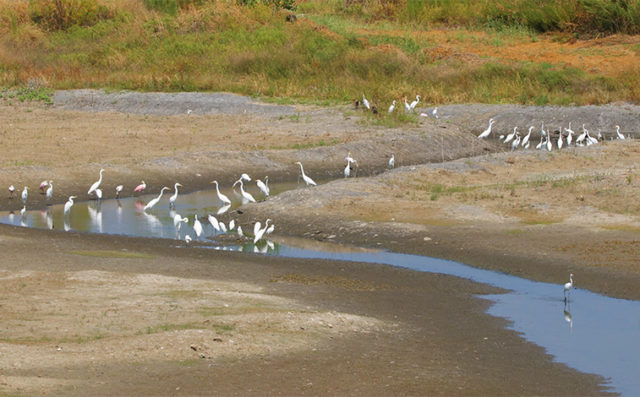
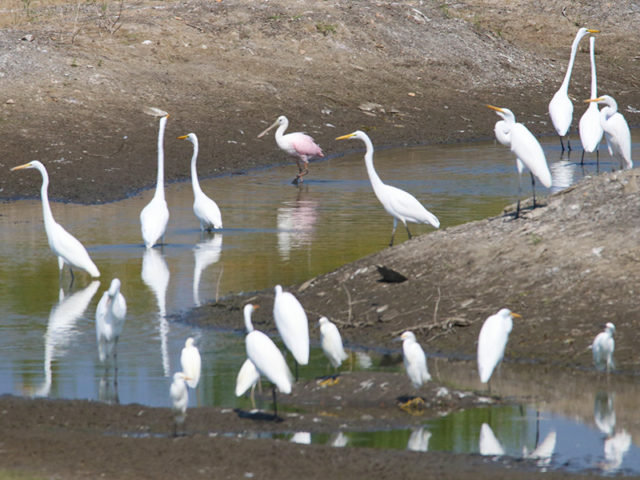
and Snowy Egrets in the closet part of the channel

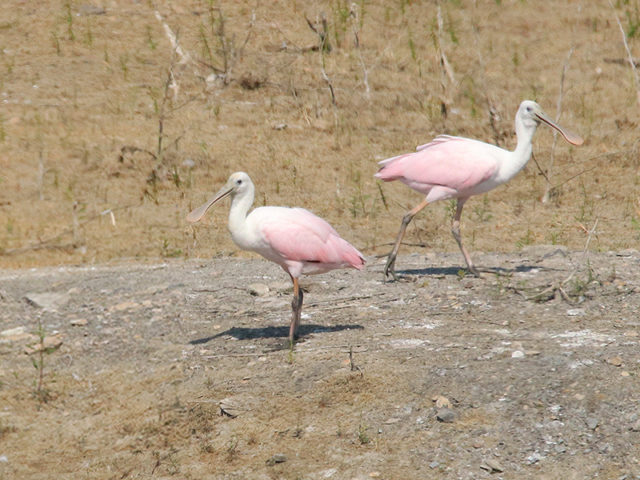
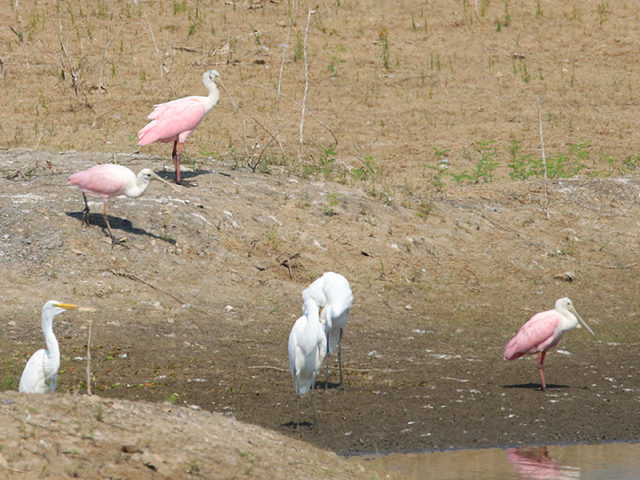

by prancing Great Egrets
This number of Roseate Spoonbills may just be a fluke, or it could be something that happens frequently but is rarely noticed. A sizable congregation like this one might also be the result of the loss of the bird’s preferred habitat in the Great Trinity Forest–lost for good when Lemmon Lake went dry after its dam breached. Only time will tell for sure.
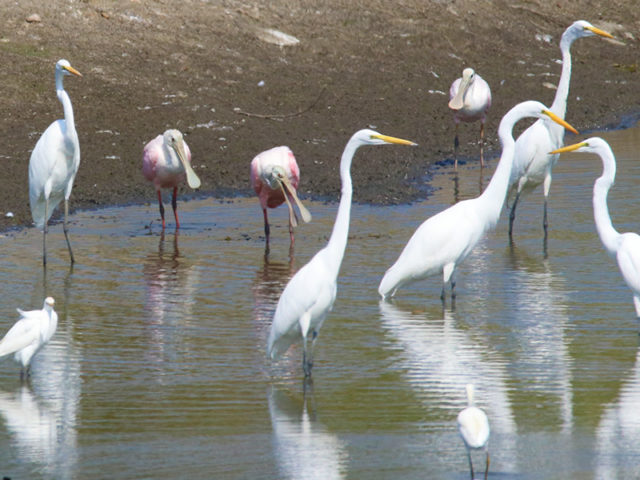

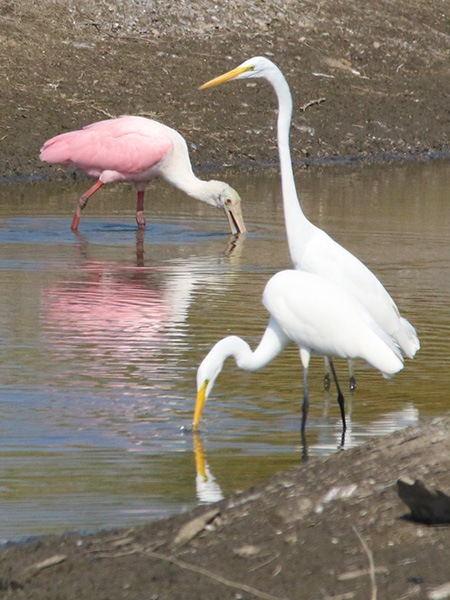
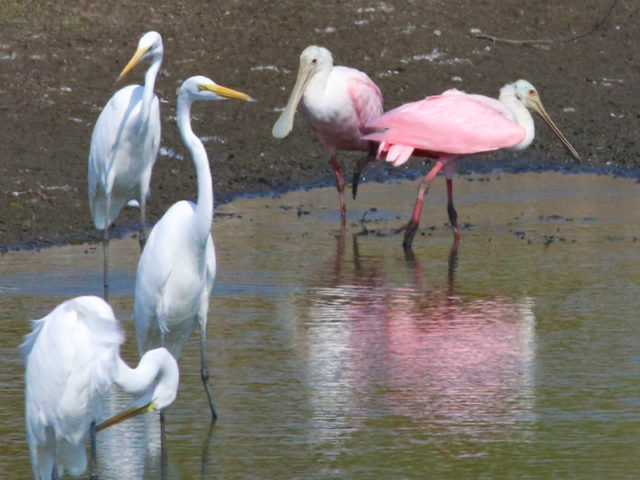
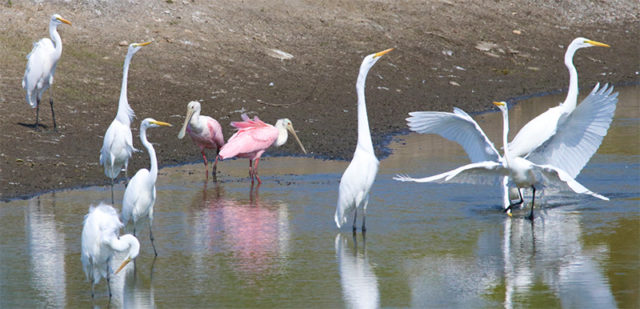
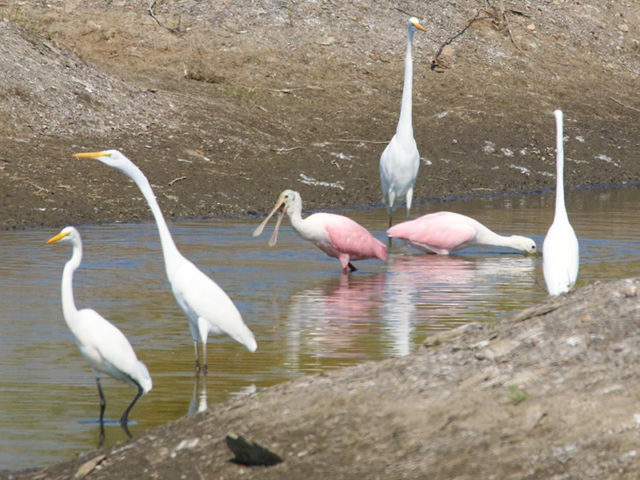
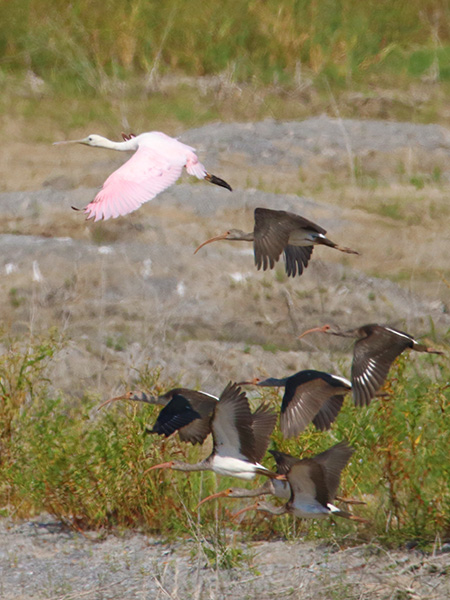
causing the spoonbills and ibises to take to the air…

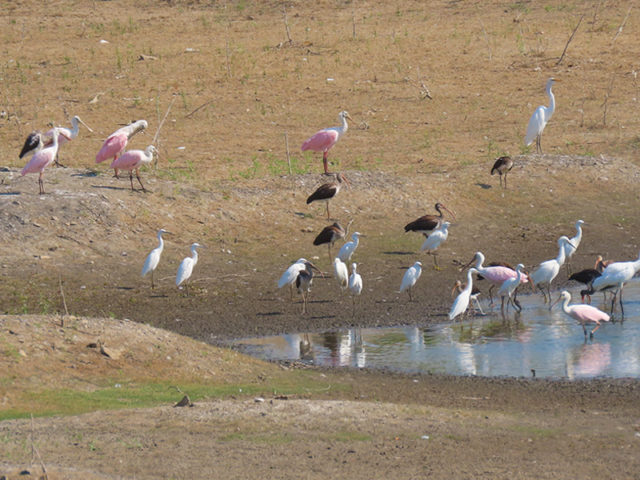
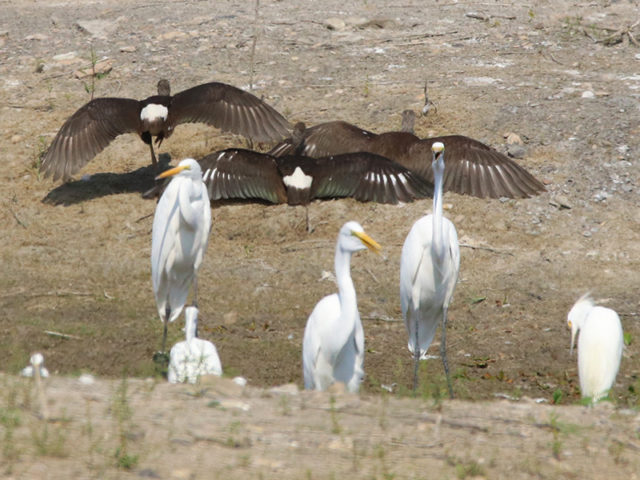
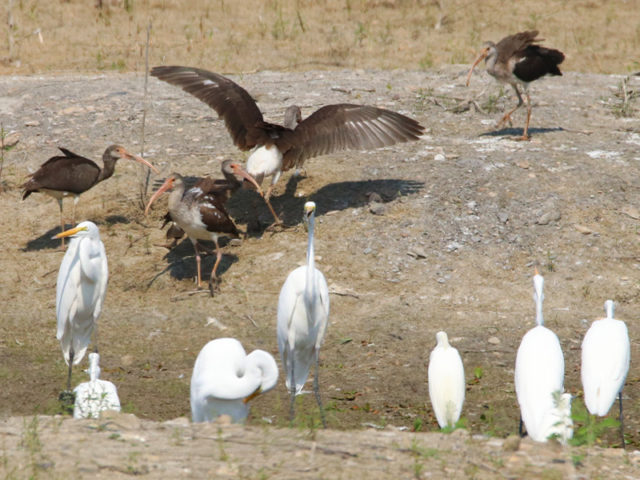
though their numbers seem to be on the increase
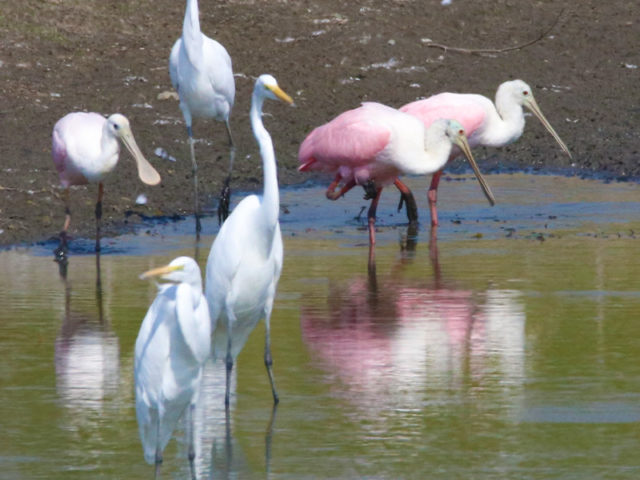
Wouldn’t it be something if losing Lemon Lake resulted in Roseate Spoonbills pioneering forays into new parts of DFW? How great would it be if these beautiful pink birds became a more common sight all across the Dallas/Fort Worth metroplex!


